
In folklore, the lepus cornutus or horned hare is a type of hare or rabbit that in the 16th, 17th and 18th centuries was believed to exist, but is now considered to be fictional.

In folklore, the lepus cornutus or horned hare is a type of hare or rabbit that in the 16th, 17th and 18th centuries was believed to exist, but is now considered to be fictional.
Horned hares were described in medieval and early Renaissance texts, both as real creatures and as farcical or mythological ones, such as by Rabelais in his Gargantua and Pantagruel . The first mention of the lepus cornutus as described as a real animal comes from Conrad Gessner in his Historiae animalium , mentioning that they live in Saxony. [1]
Many other scientific works on animals repeated this or similar claims, often with the same depictions. These include John Jonston's Historiae naturalis de quadrupetibus libri from 1655, whose illustrations were reused in multiple books, including the 1718 Theatrum universale omnium animalium, piscium, avium, quadrupedum, exanguium, aquaticorum, insectorum et angium by Ruysch. [2]
Gaspar Schott wrote about the horned hare in his 1662 work Physica curiosa, displaying it on the frontispice and with a further illustration. [3] Gabriel Clauder published in 1687 an article on a horned hare he had sighted, with an illustration. In 1743, Jacob Theodor Klein in his Summa dubiorum produced another illustration of the same.
Pierre Joseph Bonnaterre's 1789 Tableau Encyclopedique et Methodique was apparently the last major scientific work to include the lepus cornutus as a real animal. By the late 18th and early 19th century, the idea of a horned hare as a real species was mostly rejected, [4] [5] although the 1817 Nouveau dictionnaire d'histoire naturelle considers it a possibly real but very rare animal. [6]
It has been speculated that the story of the horned hare may not only be caused by fertile imagination or fabrications by taxidermists, [7] but may be caused by sightings of hares with the Shope papilloma virus. [8]
Horned hares were reported in the collection of Emperor Rudolf II.
In the biography of French scientist Nicolas-Claude Fabri de Peiresc, it is related that in 1606 he visited a widow in Leuven who had two living horned hares, said to be from Norway, but that one of them had died before his arrival. [1]
British naturalist John Ray, in his 1673 Travels Through the Low-Countries, Germany, Italy and France, reports that he had seen in Delft, in the museum of apothecary Jean Vander Mere, the "head of a horned hare" (next to things like a tooth of a hippopotamus, although Ray questions the existence of said animal). [9]
Count Ludwig August Mellin was said to own the antlers of a horned hare, which were reported on and depicted by German naturalist Johann Christian Daniel von Schreber in 1792 in his Die Säugthiere in Abbildungen nach der Natur mit Beschreibungen (Mammals in Illustrations from Nature with Descriptions).
Unlike the lepus cornutus, the following were never believed to be real animals by scientists, and have not been included in lists of binomial nomenclature.
The wolpertinger is an animal in German folklore, usually described as a horned rabbit or horned squirrel with wings and other unusual attributes. The jackalope is a mythical hare from North America, described as a hare with antlers. It was invented in the 1930s. The Al-mi'raj is a single-horned hare from Islamic folklore. Unlike most horned hares, it was described as carnivorous.
At least one genus of real 'horned' small mammal existed, the extinct horned gopher Ceratogaulus . However, this was a rodent (not a hare) and the paired conical bone protrusions on its skull were atop its snout forward of its eyes (not on its forehead nor towards the back of its head as illustrations portray for a lepus cornutus or jackalope).
Lepus Cornutus, si non hybridus (sed ex quonam), certe fabulosus
[...] mais de pareils individues paroissent extrêmement rares, du moins nous n'avons jamais eu l'occasion d'en voir.
Men heeft zich vroeger wel eens vermaakt met reehorens in den kop van opgezette hazen te bevestigen, en op deze wijze is de fabel van gehoornde hazen ontstaan
{{cite web}}: Missing or empty |url= (help)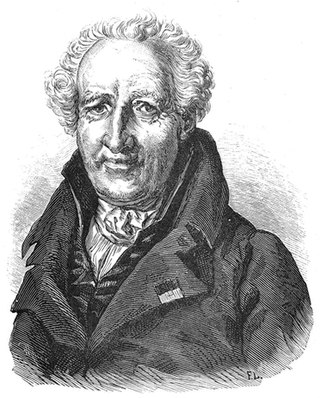
Antoine Laurent de Jussieu was a French botanist, notable as the first to publish a natural classification of flowering plants; much of his system remains in use today. His classification was based on an extended unpublished work by his uncle, the botanist Bernard de Jussieu.

The jackalope is a mythical animal of North American folklore described as a jackrabbit with antelope horns. The word jackalope is a portmanteau of jackrabbit and antelope. Many jackalope taxidermy mounts, including the original, are made with deer antlers.

Félix Édouard Guérin-Méneville, also known as F. E. Guerin, was a French entomologist.
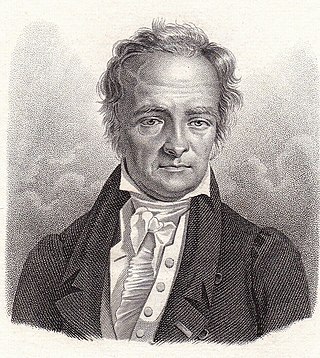
Louis Augustin Guillaume Bosc was a French botanist, invertebrate zoologist, and entomologist.

John Jonston or Johnston was a Polish scholar and physician, descended from Scottish nobility and closely associated with the Polish magnate Leszczyński family. The standard author abbreviation Jonst. is used to indicate this person as the author when citing a botanical name.
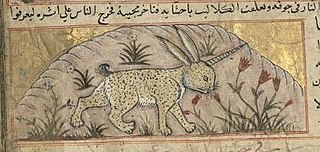
Al-Mi'raj or Almiraj is a mythical creature resembling a one-horned hare or rabbit, mentioned in medieval Arabic literature.

The giant antshrike is a species of bird in the family Thamnophilidae, belonging to the monotypic genus Batara. It is found in the southern Yungas, western Paraguay and the southern Atlantic Forest. This is the largest species of antbird, measuring 34 cm long and weighing around 150 g.

Pithys is a genus of insectivorous passerine binds in the antbird family, Thamnophilidae.
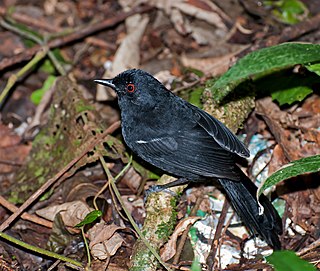
The white-shouldered fire-eye is a species of bird in the family Thamnophilidae. It is mainly found in the Atlantic Forest of southern Brazil and eastern Paraguay. Its natural habitats are subtropical or tropical moist lowland forest and subtropical or tropical moist montane forest.

The brassy-breasted tanager is a species of bird in the family Thraupidae. It is endemic to Brazil. Its natural habitat is subtropical or tropical moist montane forests.

The rufous-capped antshrike is a species of bird in the family Thamnophilidae. It is found in Argentina, Bolivia, Brazil, Paraguay, Peru, and Uruguay. Its natural habitats are subtropical or tropical moist montane forests, subtropical or tropical moist shrubland, and subtropical or tropical high-altitude shrubland.

Jacques Philippe Raymond Draparnaud was a French naturalist, malacologist and botanist. He is considered the father of malacology in France. He was professor of medicine and pathology at the Faculté de Médecine de Montpellier.
Historia animalium, published in Zurich in 1551–1558 and 1587, is an encyclopedic "inventory of renaissance zoology" by Conrad Gessner (1516–1565). Gessner was a medical doctor and professor at the Carolinum in Zürich, the precursor of the University of Zurich. The Historia animalium, after Aristotle's work of the same name, is the first modern zoological work that attempts to describe all the animals known, and the first bibliography of natural history writings. The five volumes of natural history of animals cover more than 4500 pages.
A summary of 1819 in birding and ornithology.
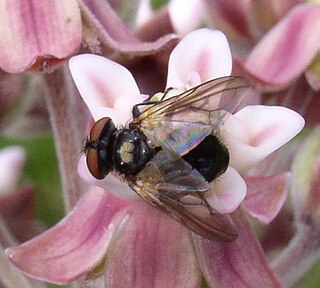
Phasiini is a tribe of flies in the family Tachinidae. As a result of phylogenetic research, most members of this tribe were transferred to other tribes in the subfamily, leaving only the two genera Elomya and Phasia.

Julien-Joseph Virey was a French naturalist and anthropologist.
François-Étienne de La Roche was a Genevan physician, naturalist, chemist, botanist and ichthyologist.

Sander Rang or Paul Charles Leonard Alexander Rang was a French conchologist and interpreter of Arabic texts. He was, in 1816, one of the survivors of the sinking of the frigate Medusa, on which he was an ensign. He spent a good part of his life in La Rochelle, where he published his early zoological observations, in particular in the bulletins of the Society of Natural Sciences of Charente-Maritimes.In 1841 Rang was one of the founding members of the Société des Amis des Arts now the Musée des Beaux-Arts de La Rochelle.He specialised in marine fauna notably in sea hares, cephalopods and other molluscs and on the heterogenous group known as zoophytes. Sander Rang described many new mollusc species including the sea hares Aplysia dactylomela, Dolabrifera dolabrifera, the cuttlefish Sepia hierredda and the land snails Striosubulina striatella, Pleurodonte desidens and Opeas hannense.